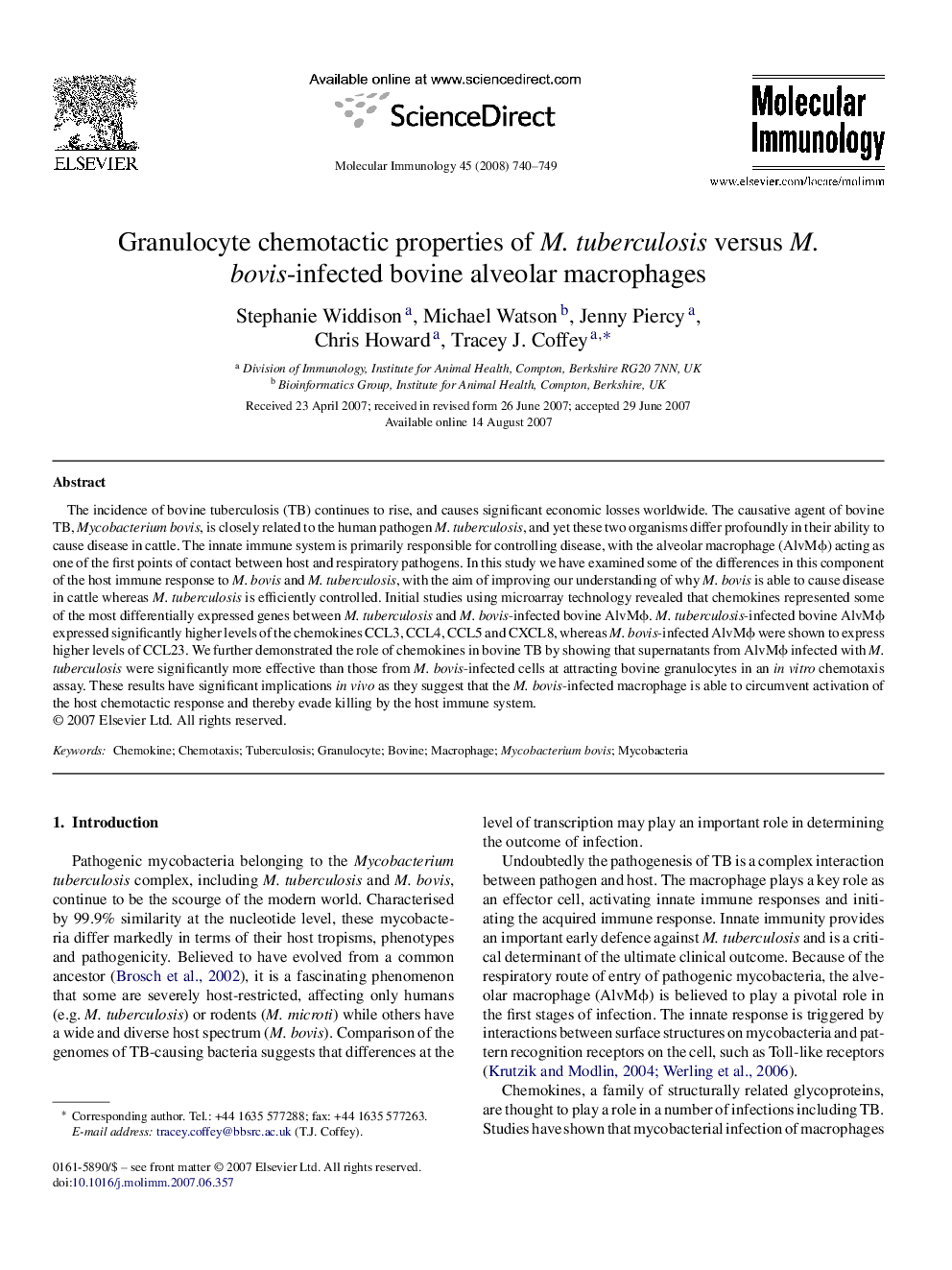| Article ID | Journal | Published Year | Pages | File Type |
|---|---|---|---|---|
| 5918018 | Molecular Immunology | 2008 | 10 Pages |
Abstract
The incidence of bovine tuberculosis (TB) continues to rise, and causes significant economic losses worldwide. The causative agent of bovine TB, Mycobacterium bovis, is closely related to the human pathogen M. tuberculosis, and yet these two organisms differ profoundly in their ability to cause disease in cattle. The innate immune system is primarily responsible for controlling disease, with the alveolar macrophage (AlvMÏ) acting as one of the first points of contact between host and respiratory pathogens. In this study we have examined some of the differences in this component of the host immune response to M. bovis and M. tuberculosis, with the aim of improving our understanding of why M. bovis is able to cause disease in cattle whereas M. tuberculosis is efficiently controlled. Initial studies using microarray technology revealed that chemokines represented some of the most differentially expressed genes between M. tuberculosis and M. bovis-infected bovine AlvMÏ. M. tuberculosis-infected bovine AlvMÏ expressed significantly higher levels of the chemokines CCL3, CCL4, CCL5 and CXCL8, whereas M. bovis-infected AlvMÏ were shown to express higher levels of CCL23. We further demonstrated the role of chemokines in bovine TB by showing that supernatants from AlvMÏ infected with M. tuberculosis were significantly more effective than those from M. bovis-infected cells at attracting bovine granulocytes in an in vitro chemotaxis assay. These results have significant implications in vivo as they suggest that the M. bovis-infected macrophage is able to circumvent activation of the host chemotactic response and thereby evade killing by the host immune system.
Related Topics
Life Sciences
Biochemistry, Genetics and Molecular Biology
Molecular Biology
Authors
Stephanie Widdison, Michael Watson, Jenny Piercy, Chris Howard, Tracey J. Coffey,
